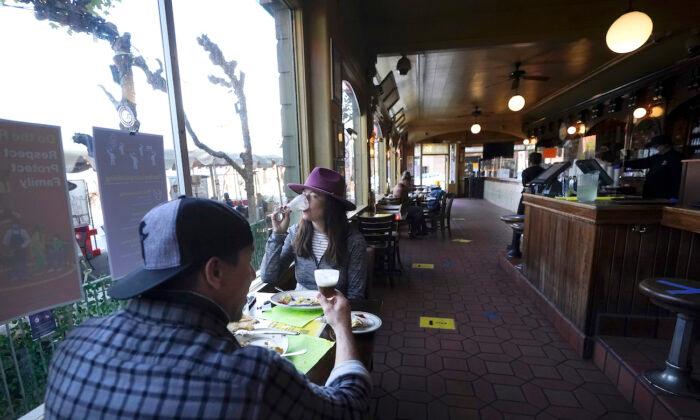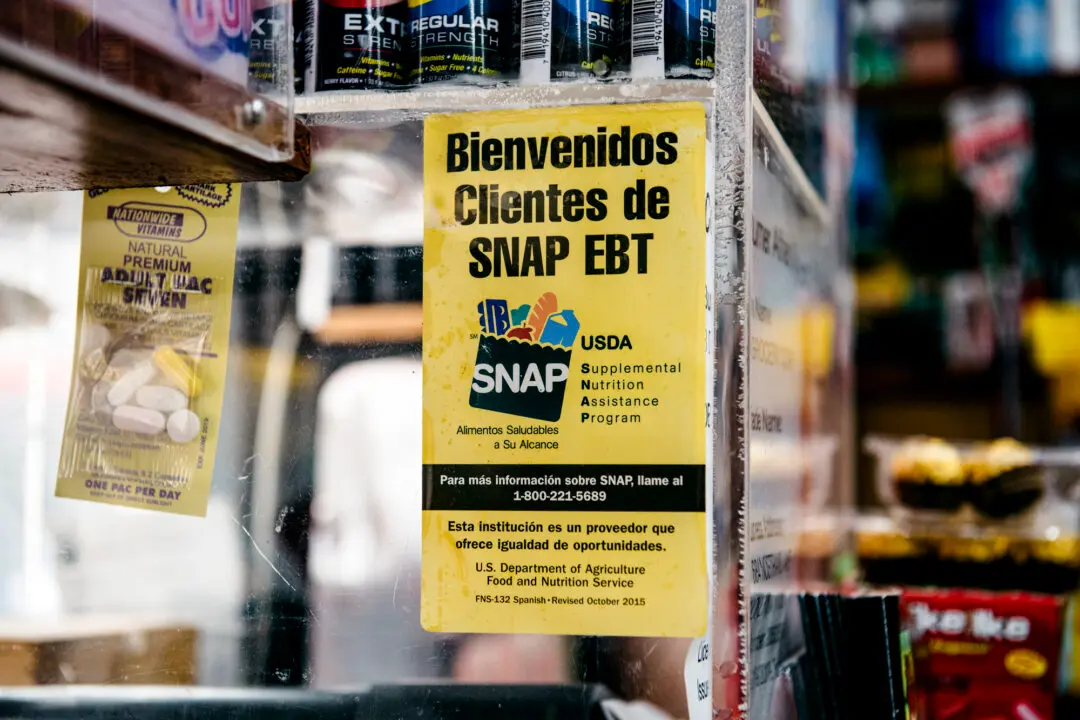San Francisco has become the first major U.S. city to require full vaccination for patrons and employees to enter restaurants, gyms, bars, and entertainment venues.
The order (
pdf), announced by Mayor London Breed and Director of Health Dr. Grant Colfax on Aug. 12, takes effect on Aug. 20 for customers and Oct. 13 for staff, and prevents residents from submitting negative COVID-19 test results as a substitute to vaccination.
“San Francisco will require businesses in certain high-contact indoor sectors, such as those that serve food or drink like bars, restaurants, clubs, theaters, and entertainment venues, as well as indoor gyms and other fitness establishments, to obtain proof of vaccination from their patrons and employees in order for them to go inside those facilities,” Breed’s office said in a
statement.
The directive also applies to select health care personnel, including pharmacists, dentists, workers at adult day centers, residential care facilities, and home health aides who aren’t included in the state health order on vaccinations.
The order doesn’t include individuals ordering or picking up food or drinks to go. Businesses have “additional time” for staff to make sure they’re compliant with the order, with a deadline of Oct. 13 set for them.
San Francisco’s order also creates a new proof-of-vaccination requirement for large events at indoor venues, requiring attendees who are age 12 or older at events of 1,000 people or more to provide proof of vaccination. California previously only required attendees to be vaccinated for events of more than 5,000 people, according to the statement.
Breed noted that the order entirely excludes individuals under the age of 12, who aren’t yet eligible for all current COVID-19 vaccines.
“The Health Order is designed to protect against the continued spread of COVID-19, particularly among the unvaccinated, while keeping businesses open and helping to ensure schools remain open,” she said.
Announcing the new order, the new mandate has been enacted to “protect kids and those who can’t get vaccinated” and to ensure that the city doesn’t “go backward” and return to a full lockdown.
“If we want to continue down this path, if we want to continue to open, to make sure that people are healthy, make sure we are protected, to make sure that we’re in a good place as a city from a public health perspective, so that our economy can really recover to its fullest extent, then we all have to do our part. We need to get vaccinated,” Breed said.
San Franciso’s order is more stringent than the one announced by New York
Mayor Bill de Blasio on Aug. 3, which requires workers and patrons at some indoor businesses to show proof of at least one COVID-19 vaccine dose for indoor activities, starting on Sept. 13.
Earlier this month, San Francisco and six other Bay Area counties also announced that they were
reinstating a mask mandate for all indoor public settings, as COVID-19 infections surge because of the more contagious Delta variant of the virus.
The new mandate applies to everyone, regardless of vaccination status, and took effect on Aug. 2 in San Francisco, Alameda, Contra Costa, Marin, San Mateo, Santa Clara, and Sonoma counties, as well as the city of Berkeley.
In a news conference announcing the new orders, Sundari Mase, the interim health officer for Sonoma County, which is north of San Francisco, said the Delta variant has accounted for 95 percent of new coronavirus cases in the region.
“We are facing a much more aggressive and contagious opponent right now,” she said.
San Francisco’s current
seven-day average for daily cases is 246, and the test positivity rate is 5.6 percent. During the peak of the winter surge, daily cases averaged 373 and the test positivity rate was 5.2 percent. As of Aug. 8, 109 people were hospitalized, compared to 265 at the peak of the winter surge.





